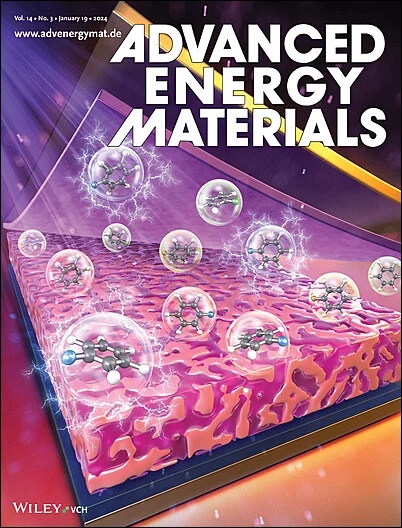在设计的反应器中自压辅助水热再生废石墨:二次寿命电化学和技术环境效益
IF 26
1区 材料科学
Q1 CHEMISTRY, PHYSICAL
引用次数: 0
摘要
一条绿色和可持续的废石墨回收路线是解决即将到来的石墨短缺的解决方案。目前的回收方法包括在700-1500°C范围内进行高温处理,并伴有有毒溶剂洗涤的几个步骤,造成二次环境污染。本文设计了一种溶剂热搅拌反应器,该反应器在水介质中以200℃的相当低的温度实现石墨再生。在温度和离心力的同时作用下,在封闭反应器内自动产生压力的辅助下,消除了表面杂质,修复了结构紊乱,产品纯度达到99.9%。再生石墨的第二次使用寿命和第一次使用寿命一样好,在0.5C电流下,Li+‐插入容量为321 mAh g - 1,循环200次后容量保持率为92.8%。这一步石墨回收路线是环保的,也减少了能源投入,水的消耗,并通过技术-环境计算量化温室气体排放。本文章由计算机程序翻译,如有差异,请以英文原文为准。
Autogenous Pressure Assisted Aqua‐Thermal Regeneration of Spent Graphite in a Designed Reactor: Second‐Life Electrochemistry and Technoenvironmental Benefits
A green and sustainable route of recycling spent graphite is the solution of its forthcoming shortage. Present recycling approaches include high‐temperature treatment in the range of 700–1500 °C accompanied by several steps of washing with toxic solvents causing secondary environment pollution. Herein, a solvothermal stirring reactor is designed, which accomplishes graphite regeneration at an appreciably low temperature of 200 °C in aqueous media. The simultaneous impact of temperature and centrifugal force assisted by the pressure autogenerated within closed reactor eliminates surface impurity, repairs structural disorder, and yields 99.9% pure product. Regenerated graphite serves second life as good as first life exhibiting Li+ ‐intercalation capacity of 321 mAh g−1 at 0.5C current rate with 92.8% capacity retention after 200 cycles. This one‐step graphite reclamation route is environmentally benign too reducing energy input, water consumption, and greenhouse gas emissions as quantified by techno‐environmental calculations.
求助全文
通过发布文献求助,成功后即可免费获取论文全文。
去求助
来源期刊

Advanced Energy Materials
CHEMISTRY, PHYSICAL-ENERGY & FUELS
CiteScore
41.90
自引率
4.00%
发文量
889
审稿时长
1.4 months
期刊介绍:
Established in 2011, Advanced Energy Materials is an international, interdisciplinary, English-language journal that focuses on materials used in energy harvesting, conversion, and storage. It is regarded as a top-quality journal alongside Advanced Materials, Advanced Functional Materials, and Small.
With a 2022 Impact Factor of 27.8, Advanced Energy Materials is considered a prime source for the best energy-related research. The journal covers a wide range of topics in energy-related research, including organic and inorganic photovoltaics, batteries and supercapacitors, fuel cells, hydrogen generation and storage, thermoelectrics, water splitting and photocatalysis, solar fuels and thermosolar power, magnetocalorics, and piezoelectronics.
The readership of Advanced Energy Materials includes materials scientists, chemists, physicists, and engineers in both academia and industry. The journal is indexed in various databases and collections, such as Advanced Technologies & Aerospace Database, FIZ Karlsruhe, INSPEC (IET), Science Citation Index Expanded, Technology Collection, and Web of Science, among others.
 求助内容:
求助内容: 应助结果提醒方式:
应助结果提醒方式:


